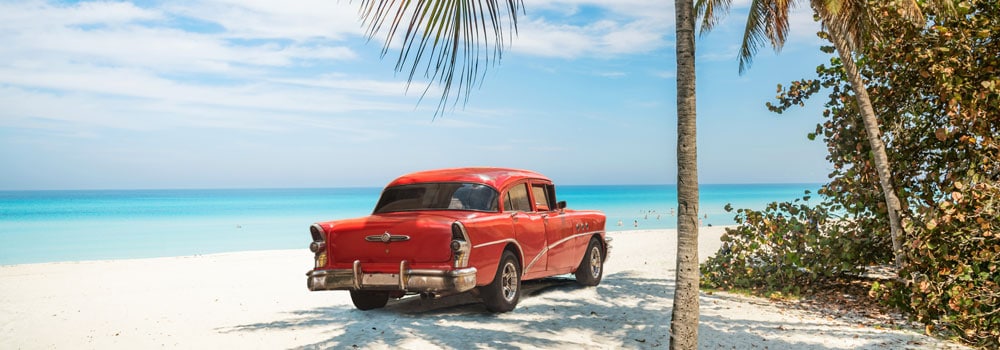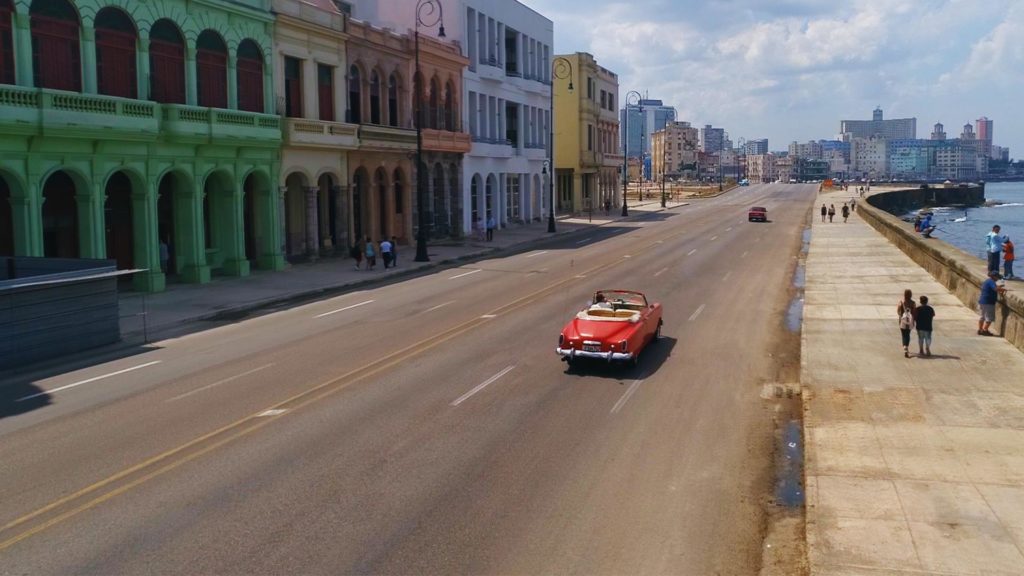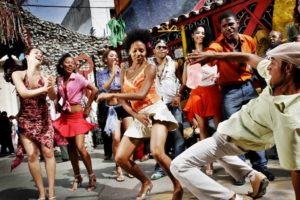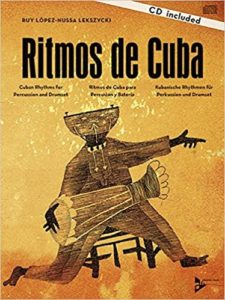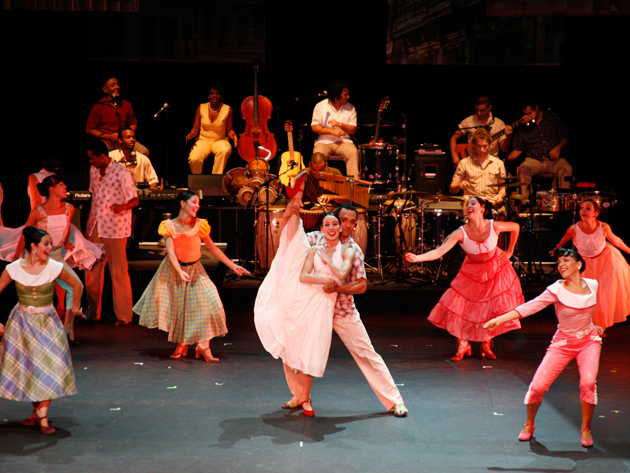 NUESTROS RITMOS MUSICALES QUE HAN RECORRIDO EL MUNDO.
NUESTROS RITMOS MUSICALES QUE HAN RECORRIDO EL MUNDO.
LA RUMBA:
La rumba tiene su origen en zonas urbanas, cuarterías, solares, en los puertos y alrededor de los ingenios azucareros, de ahí sus instrumentos musicales: tambores, cajones, claves y cucharas. “Los Muñequitos de Matanzas” y “Los Papines”, y la agrupación camagüeyana ”Rumba Ta”, entre otros, han llevado la rumba a niveles estelares en todos los rincones del mundo.
En Cuba este género que se canta y baila, y que es básicamente urbano, encontramos tres vertientes: el yambú de origen urbano, la columbia, rural, y el guaguancó, urbano, y quizás el más popular de todos. Su música carece de elementos rituales o religiosos.
LA CONGA:
Se le llama congo a un tambor, que se puede tocar lo mismo sentado, de pie, que marchando, y dio nombre al género musical de su nombre, que se baila y canta y su música tradicionalmente ha acompañado a las comparsas carnavalescas. Su origen se remonta a las fiestas que celebraban los esclavos en el llamado Día de Reyes, la que era permitida por los amos una vez al año.
La conga que era considerada un baile callejero, también fue espectáculo de salón cuando el músico Eliseo Grenet hizo un nuevo tipo de conga en Paris (1932), que cautivo a los europeos. La conga sigue viva, pues la vemos renacer en cada carnaval que se celebra a lo largo y ancho de nuestra Isla, o cuando Ricardo Leyva nos provoca “Añoranza por la Rumba”.
EL DANZON:
El danzón: Género bailable y cantable. Su nombre procede y es aumentativo de danza que era, según nos contó Helio Herovio “un baile de figuras colectivo, formado por parejas provistas de arcos y ramas de flores, muy usual en la segunda mitad del siglo XIX. Parece que los jóvenes, o la época exigían un baile más personal, íntimo…y así surgió el Danzón, una música “para bailar en un ladrillito, pegaditos”.
El creador del cadencioso danzón fue el mulato matancero Miguel Failde, que compuso el primero llamado “Las Alturas de Simpson”, el que fue estrenado el 1ro. Enero de 1878, en el Liceo de Matanzas. A partir de este momento, y dada la aceptación popular de nuevo ritmo, las orquestas de Failde en Matanzas y la de Valenzuela en La Habana, crearon rumbas, boleros, guarachas, guajiras, óperas etc, en tiempo de Danzón. El concurso ofrecido por el “Centro de Cocheros, Cocineros y Reposteros de la raza de color”, fue el impulso definitivo que llevó al danzón a ser considerado el Baile Nacional de Cuba.
Entre los danzones más famosos recordamos “Almendra” de Abelardito Valdés, “El Bombin de Barreto” de José Urfé, que incorporó la voz al final del danzón, así como “Tres Lindas Cubanas” de Antonio Maria Romeo y no podía faltar en esta nota, la voz del danzón: Barbarito Diez.
EL DONZONETE:
Para ser cantado y bailado el Danzonete fue creado por Aniceto Díaz, y el primero se llamó ”Rompiendo la Rutina”. El que fue estrenado el 8 de junio de 1929. El Danzonete, como su nombre lo indica, tuvo su origen en el Danzón pero con nuevas sonoridades. Aniceto Díaz expreso:”el viejo danzón no ofrece nada nuevo a los bailadores. Desde Failde a los más destacados cultivadores del danzón este no ha cambiado. Es un genero caduco”.
Es decir que Danzón se impone a la Danza, el Danzonete trata de imponerse al Danzón. La eterna lucha entre lo viejo que trata de mantenerse y lo nuevo que lucha por imponerse. Así es y será por lo siglos de los siglos.
Aunque el danzonete no tuvo la vigencia tan destacada del danzón, no obstante muchas fueron las voces que lo incorporaron su repertorio como Panchito Riset, Abelardo Barroso, Joseito Fernández, y la eterna voz del danzonete Paulina Álvarez.
Danzonete prueba y vete
Yo quiero gozar contigo
Al compás del danzonete.
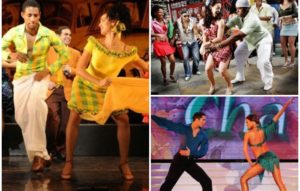 OUR MUSICAL RHYTHMS THAT HAVE TRAVELED THROUGHOUT THE WORLD.
OUR MUSICAL RHYTHMS THAT HAVE TRAVELED THROUGHOUT THE WORLD.
THE RUMBA:
The rumba has its origin in urban areas, barracks, lots, in the ports and around the sugar mills, hence its musical instruments: drums, drawers, keys, and spoons. “Los Muñequitos de Matanzas” and “Los Papines”, and the Camaguey group “Rumba Ta”, among others, have brought rumba to stellar levels in all corners of the world.
In Cuba this genre that is sung and danced, and that is basically urban, we find three strands: the yambú of urban origin, the Columbia, rural, and the guaguancó, urban, and perhaps the most popular of all. His music lacks ritual or religious elements.
THE CONGA:
A drum is called congo, which can be played the same while sitting, standing, or marching, and gave its name to the musical genre of its name, which is danced and sung and its music has traditionally accompanied the carnival troupes. Its origin dates back to the festivities held by slaves on the so-called Three Kings Day, which was allowed by the masters once a year.
The conga, which was considered a street dance, was also a hall show when the musician Eliseo Grenet made a new type of conga in Paris (1932), which captivated Europeans. The conga is still alive, as we see it reborn at every carnival that is celebrated throughout our Island, or when Ricardo Leyva provokes “Longing for Rumba”.
THE DANZÓN:
The danzón: danceable and singing genre. Its name comes from and is augmentative of dance, which was, as Helio Herovio told us, “a collective figure dance, made up of couples with bows and flower branches, very common in the second half of the 19th century. It seems that young people, or the times, demanded a more personal, intimate dance … and that is how Danzón came about, a music “to dance on a brick, stick together.”
The creator of the lilting danzón was the mulatto from Matanzas Miguel Failde, who composed the first one called “Las Alturas de Simpson”, which was released on the 1st. January 1878, at the Liceo de Matanzas. From this moment on, and given the popular acceptance of a new rhythm, Failde’s orchestras in Matanzas and that of Valenzuela in Havana, created rumbas, boleros, guarachas, guajiras, operas, etc., in Danzón’s time. The contest offered by the “Center of Coachmen, Cooks and Pastry chefs of the colored race” was the definitive impulse that led the danzon to be considered the National Dance of Cuba.
Among the most famous danzones we remember Abelardito Valdés’ “Almendra”, José Urfé’s “El Bombin de Barreto”, which incorporated the voice at the end of the danzón, as well as Antonio Maria Romeo’s “Tres Lindas Cubanas” and could not be missing in this note , the voice of the danzón: Barbarito Diez.
THE DONZONETE:
To be sung and danced the Danzonete was created by Aniceto Díaz, and the first one was called “Breaking the Routine”. The one that was released on June 8, 1929. The Danzonete, as its name indicates, had its origin in the Danzón but with new sounds. Aniceto Díaz expressed: “the old danzón offers nothing new to the dancers. From Failde to the most prominent growers of the danzón, this has not changed. It is an expired genre. ”
That is to say that Danzón prevails over the Dance, the Danzonete tries to prevail over the Danzón. The eternal struggle between the old that tries to maintain itself and the new that struggles to impose itself. So it is and will be forever and ever.
Although the danzonete did not have the outstanding validity of the danzón, nevertheless there were many voices that incorporated its repertoires such as Panchito Riset, Abelardo Barroso, Joseito Fernández, and the eternal voice of the danzonete Paulina Álvarez.
Agencies/ Radio ENcyclop. / Juan B. Rodriguez/ Internet Photos/ YouTube/ Arnoldo Varona/ www.TheCubanHistory.com
THE CUBAN HISTORY, HOLLYWOOD.



